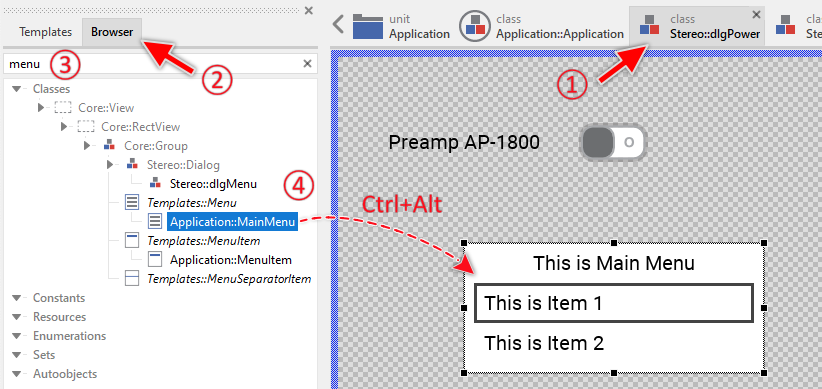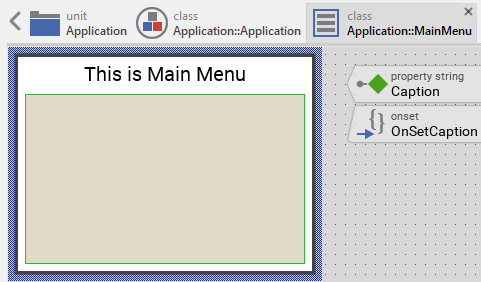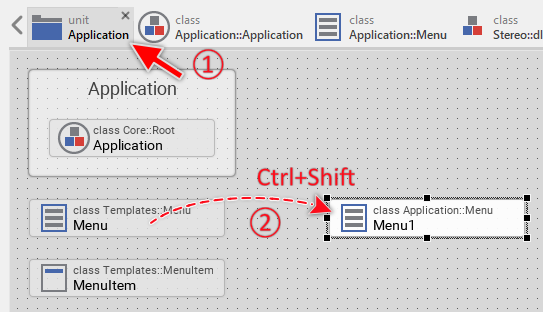Hello Robert,
it seems, the menu is not part of any GUI component. Accordingly it is not used in the project and it is not shown. Assuming you want the menu to appear in the Stereo::dlgPower component, try following:
1. In the Navigation Bar switch to the Stereo::dlgPower class.
2. Switch to the Browser window on the left side of the Embedded Wizard.
3. In the Browser window look for the Application::MainMenu class. It represents the menu. You can use the 'Search ...' edit field in the upper area of the Browser window to find the right class. For example, enter in the search edit field 'menu'.
4. While holding down the keys CTRL + ALT pressed, click with the mouse on the Application::MainMenu item and drag it to the Composer. Release the mouse and then the keys CTRL + ALT.
Following figure illustrates the steps. Theser are also explained in the article Create new Embedded object:

Now, when you start the prototyper for the entire application (Ctrl+F5), the menu appears embedded within the dlgPower component. You can interact with the menu and you can slide horizontally the dialogs:

Does it solve the problem?
One hint more:
You created the menu from a template. This is the right way. Then you have added two menu items to the just created Application::MainMenu class. If you don't plan to create more menus, it is ok. However, If you plan to create more menus, you would need to duplicate the implementation of the menu class for each of them. Try following:
1. Remove again the both items from the class Application::MainMenu. The component should appear without any menu item inside it as shown below:

2. Switch to the Application unit. And being there select and rename the class MainMenu to something more generic, e.g. Menu.
The resulting class Application::Menu serves thereupon as a generic base class for all menu components you plan to create in your application.
3. Derive a new class from the Application::Menu class. For this purpose, you drag&drop the class Menu while holding down the keys Ctrl + Shift. This creates a new class named per default Main1 as shown in the screenshot below:

4. Rename the derived class Menu1 to e.g. MainMenu.
5. Open the derived class by double clicking on it. New Composer page appears.
As you see the derived class does not contain any Bricks to implement the menu functionality. This functionality is inherited from the base class Menu. Now you can add menu items to the derived class similarly as you added the menu items to the 'old' MainMenu class.
6. Wherever you want the derived menu to appear create an instance of it as shown at the beginning of my answer above.
The advantage of this approach is, you can derive more menu classes. All menu classes will inherit the functionality from the generic base class Menu. No duplication of the functionality is found reducing so the code size of your application. Later if you decide to change some functionality of your menus you do this in the base class Menu only and all derived menu classes are automatically affected by this modification.
I hope this helps you further.
Best regards
Paul Banach